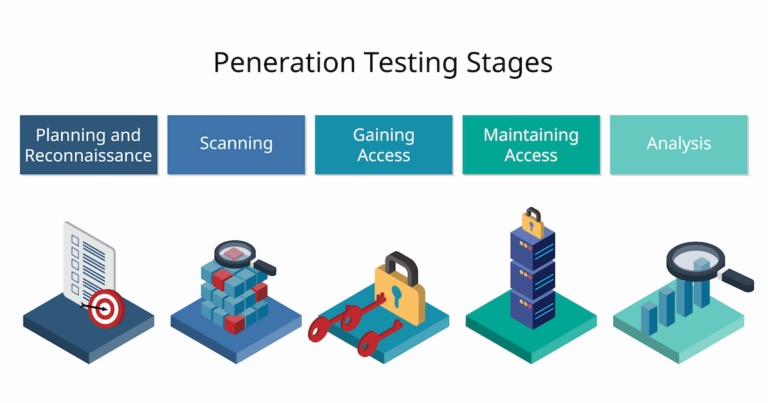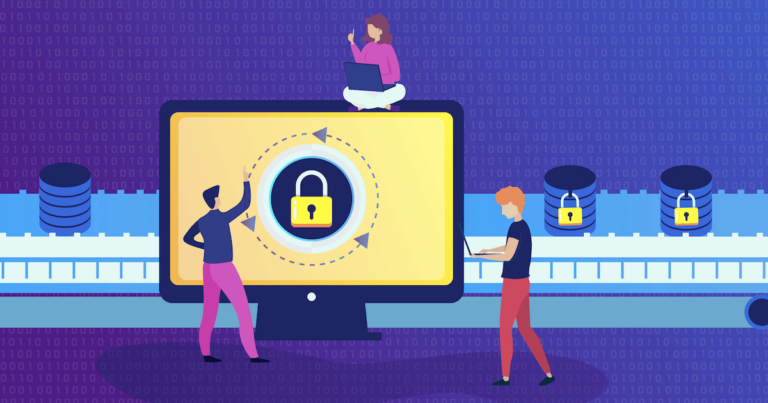All Internet-facing systems and applications carry security risks. Any application with ineffective security controls in place is potentially vulnerable. Attackers target e-commerce sites, third-party service providers, mobile applications, network applications, and other companies that provide applications used on websites. Cybercrime and similar threat actors continue evolving and modifying their attacks, including customizing malicious code for different targets and exploiting vulnerabilities in unpatched website software or applications.
Now more than ever, organizations need to make cybersecurity an everyday priority, as an attack can hit small and large businesses. Every organization needs to understand they are a target and must have a plan to protect its data. For this to happen, companies must grow in their awareness of the nature of these attacks and the security controls necessary to detect and defeat them.
Many companies have begun to implement DevSecOps to ensure application security as DevSecOps incorporates security practices into the development process. But it’s a time-consuming process if security has never been considered first in the app development processes.
Vulnerability assessment and penetration testing, combining automated and manual security testing procedures, are a defense-in-depth approach with an ongoing commitment to security to safeguard against becoming a victim of cyber threats. Cloud security experts and teams follow five penetration testing phases to detect unforeseeable vectors. They perform ethical hacking procedures, including black/white/gray box to sneak into an application, explore opportunities for exploitation and prepare in-depth vulnerability reports with actionable remediation guides allowing clients to adopt the solutions, implement them and operate business smoothly.
1. Planning and Reconnaissance
To perform effective and result-oriented penetration testing, you first need to know the system to be addressed, the testing methods that need to be performed, and define the scope and goals of the test. You need to know the application structure and architecture to familiarize yourself with the system. All these things fall under planning, where a pentester designs and defines the complete scope of the project, shares requirements and challenges of the project with the client, and informs about the processes and methods that would be used to extract the desired results.
Based on the agreed process and methods to be followed, a pentester uses a reconnaissance method, a set of processes and techniques, to gather as much information about the system as possible. In some cases, application information, such as the nature of business, architecture, and service delivery models, is shared with the tester. In cases like black box testing, testers and security professionals have to start from scratch, just like a hacker. They break through the application to gather valuable business data. Following reconnaissance that includes footprinting, scanning, and enumeration techniques, a tester interacts with the network’s open ports, running services, etc.
It uses the information to gain access to networks beyond the internet. To perform reconnaissance, they follow two ways such as, active and passive, depending on what methods are used to gather information. Through passive reconnaissance, information is pulled from resources that are already publicly available. In active reconnaissance, a tester directly interacts with the target system to gain information. Both processes provide a complete picture of the target’s vulnerabilities.
2. Scanning/Vulnerability Assessment
The second step in penetration testing is scanning all the collected data of the reconnaissance phase. To breach the system, security specialists identify open ports and look for network traffic on the target system. They identify as many open ports as possible by scanning the system. Automated processes are also used to perform scanning for vulnerability assessment. Since automated tests help identify potential threats but cannot determine the level at which a hacker could gain access, penetration testing professionals keep human intervention intact to reach the full potential. In threat modeling and vulnerability assessment, the most common factors a pentester will look after are:
- Business assets are considered high-value assets such as employee, customer, and technical data.
- Identify and categorize internal and external threats such as management, employees, vendors, ports, network protocols, network traffic, web applications, and more.
A pentester uses vulnerability scanners to complete the discovery and inventory of the security risk posed by identified vulnerabilities. The pentester further uses it to validate whether the vulnerability is exploitable. A list of vulnerabilities is shared with the clients during the reporting phase.
3. Gaining Access/Exploitation
Once all vulnerabilities and entry points are identified and listed, a pentester begins to test your exploits found in the network, data, and application. The goal of an ethical hacker that a pentester performs is to dive as deep as possible into the system to identify high-value targets and avoid any detection. Depending on your scope definition that guides how far testing should be performed, the security specialist abides by the initial scoping and performs the pentesting. Some of the standard exploit tactics used by pentesters are:
- Web application attacks
- Network attacks
- Memory-based attacks
- Wi-Fi attacks
- Zero-Day Angle
- Physical Attacks
- Social engineering
A pentester simultaneously prepares a review document of how vulnerabilities can be exploited while explaining the techniques and tactics he used throughout the process to obtain access to valuable assets of the company through penetrating the company’s application. He also explains exploitation phases with clarity and results obtained from the exploit performed on the application.
4. Maintaining Access
Once a pentester gains access to the target system, he works hard to keep his boat afloat. “Maintaining access” is a phase of the pentest cycle that has a very concrete purpose – to allow the pentester to linger in the targeted systems until he acquires what information he considers valuable and then manages to extract it successfully from the system. However, as is often the case, it is easier said than done. However, the process is challenging but not impossible.
A skilled pentester maintains access within the system and explores all possibilities of a security weakness that a hacker wants to exploit. Once all the penetration testing recommendations are complete, they clean up the environment, reconfigure any access they obtained to penetrate the environment, and prevent future unauthorized access into the system through whatever means necessary.
Typical cleanup activities include:
- Removing any executables, scripts, and temporary files from compromised systems
- Reconfiguring settings back to the original parameters before the pentest
- Eliminating any rootkits installed in the environment
- Removing any user accounts created to connect to the compromised system
5. Reporting & Analysis
Once the exploitation process is complete, the tester prepares and shares a report about his penetration test’s findings. You or your company receive written recommendations. A pentester creates a report documenting vulnerabilities and puts them into context so that you or your organization can remediate its security risks. The most valuable reports include actionable remediation guides outlining uncovered vulnerabilities, a business impact assessment, an explanation of the exploitation phase’s difficulty, a technical risk briefing, remediation advice, and strategic recommendations. Insights and opportunities like these are significant to help enterprises improve security posture.
Conclusion
Penetration testing is a critical part of cloud security operations, and as more organizations move to the cloud and adopt new technologies, the need for penetration testers will only increase. By identifying and fixing vulnerabilities, penetration testers can improve the security of organizations’ systems and protect their data from hackers.




